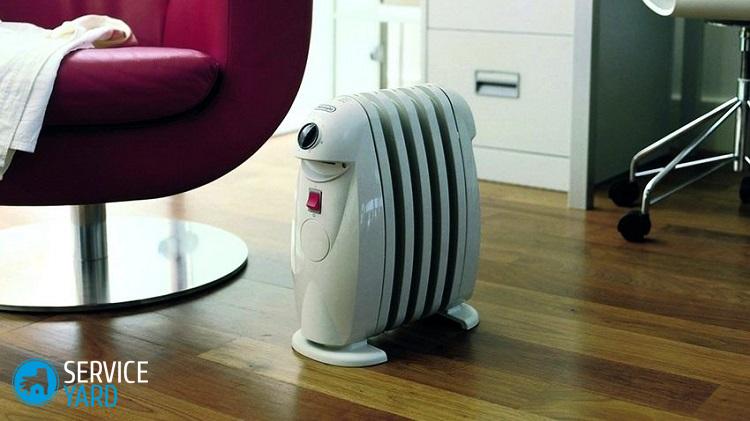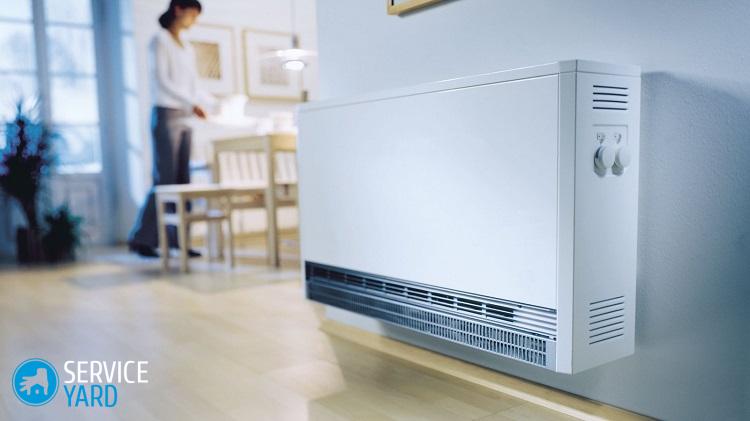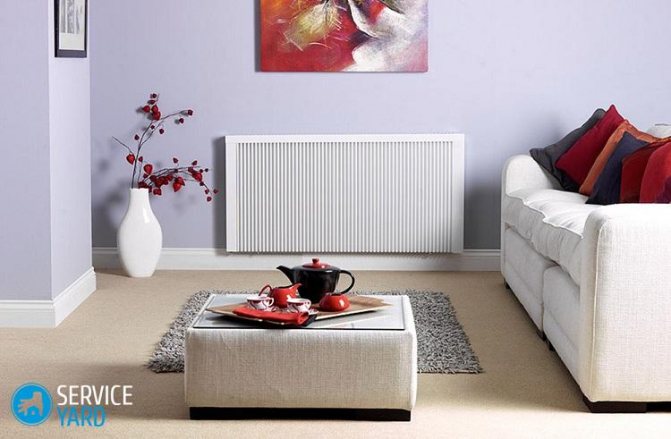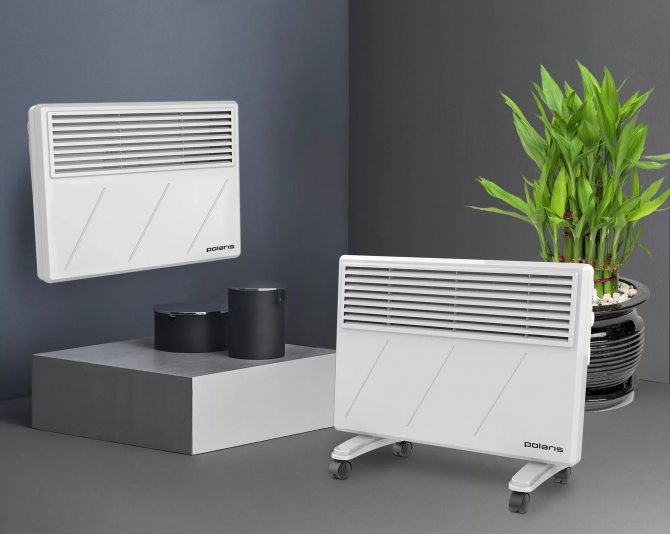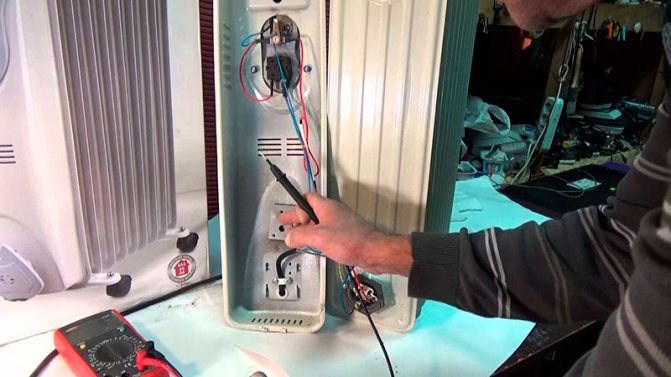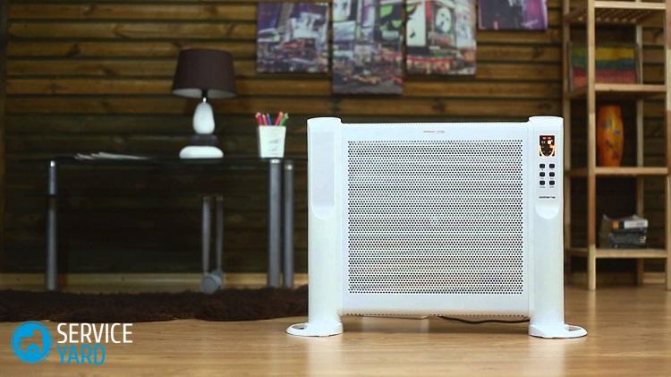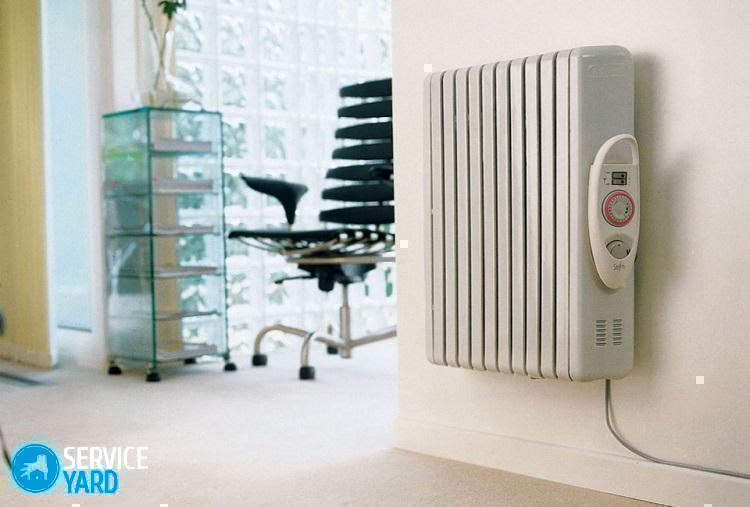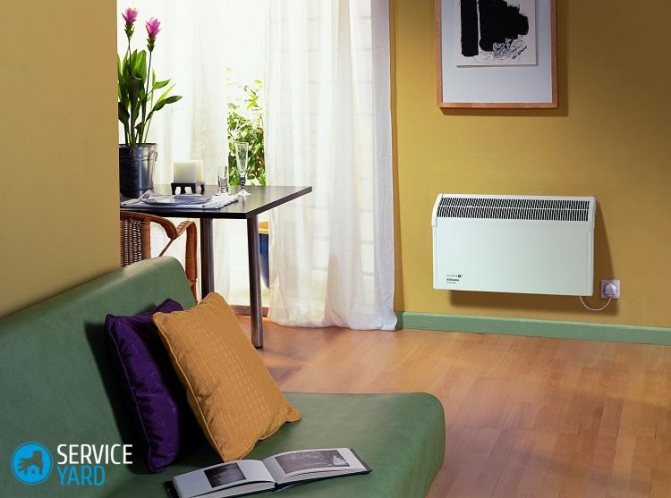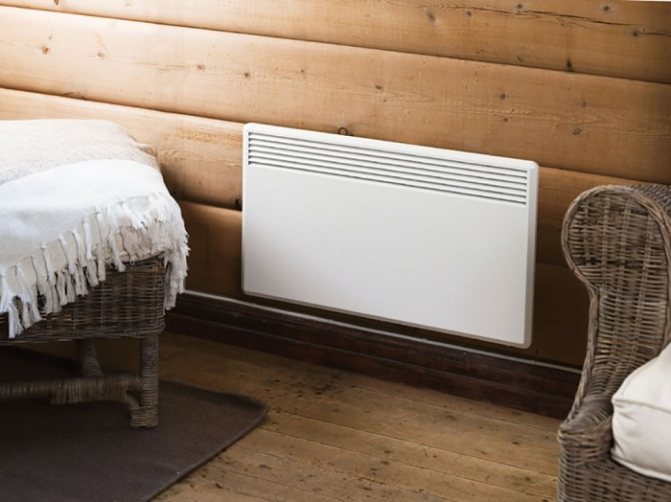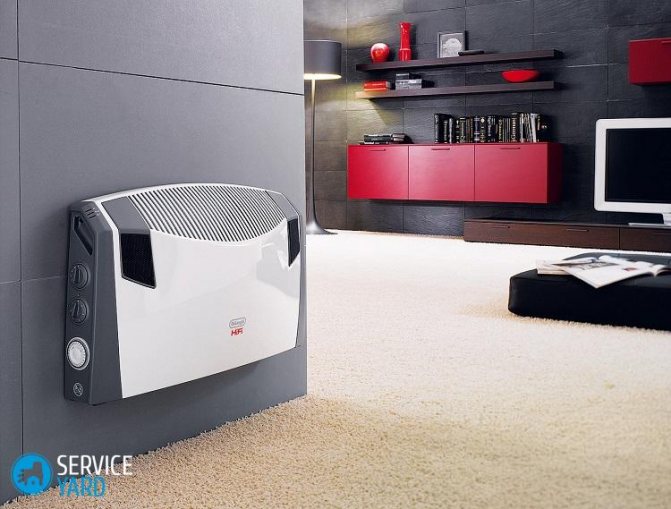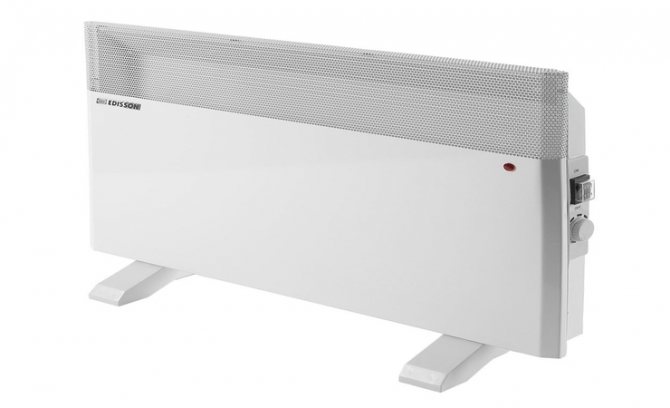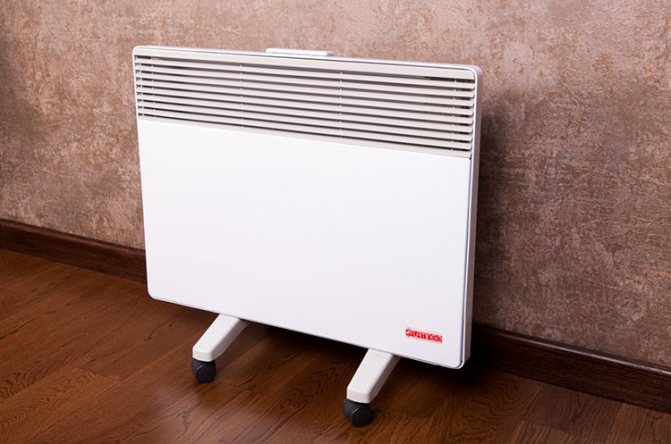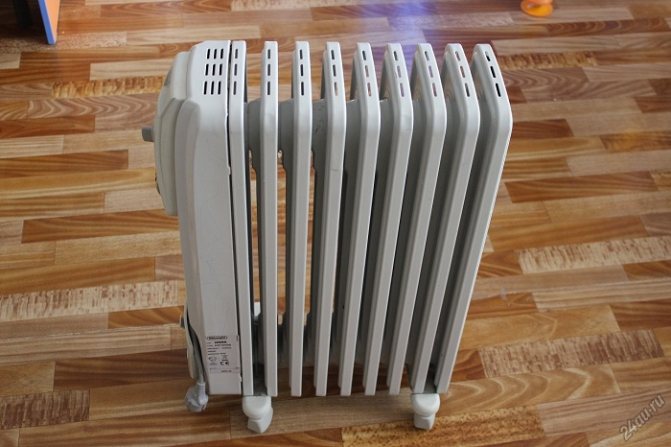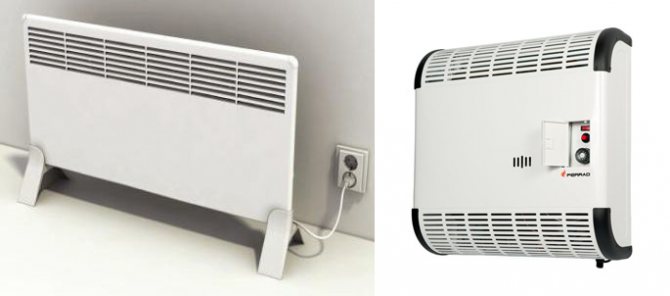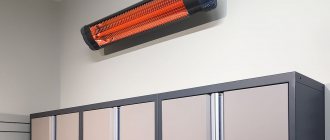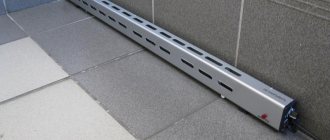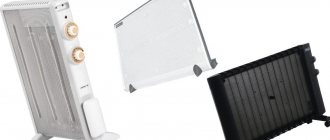
With the onset of cold weather, consumers begin to think about purchasing heating devices, and when the moment comes when they have to choose a particular type, some difficulties begin. You need to understand that choosing a heater is not so easy due to the large number of analog products.
It is also worth noting that the choice complicates the number of advantages for each of the available options, so here you simply cannot do without a thorough and detailed analysis of the available goods.
What requirements are usually made by the consumer for the purchase (and it does not matter what it will be) - so that it is inexpensive, and at the same time of sufficient quality. Unfortunately, such a ratio is not so easy to find in a product, but nevertheless, if you analyze everything thoroughly enough, then you can find, so to speak, the ideal option. So let's consider: which is better - an oil heater or a convector?
In addition to the positive aspects, there are also a number of disadvantages, and this also applies to each type of heating appliance, so the consumer must necessarily take this criterion into account.
The principle of operation and design of the convector
A convector is a heating device, the bulk of the heat from which is transferred to the room through convection (from 90%). This is a type of heat transfer in which the streams of a gaseous medium are heated, passing through the device, and rise upward, transferring heat to the served room. The body of the electric convector does not heat up above 45 degrees.


Air flows from the convector.
The converter heater consists of several elements that allow you to organize the air flow and protect the device:
- housing with openings for air intake and supply;
- heating element;
- devices for temperature regulation and protection of the device from overheating.
Converter heaters use electricity, gas or liquid from the heating system as a source of energy. Since the comparison is made with an electric oil heater, further we will consider the same type of convector.
In what cases is an oil heater more profitable?
Models of this type are suitable if you need to organize heating according to traditional principles, but with high heat transfer. This option, in particular, will be appropriate in a large house - by moving the installation, you can alternately fill several operating rooms with heat at once. If necessary, the user will be able to organize specific heating of the living room, study or recreation area. That is, there will be no need to install separate equipment for each of these zones - the mobile device will cope with its task point-wise and in a short period of time. But even in an apartment, a convector is not always the best choice. Reviews show that the stationary operation of the oil unit will have its advantages. The fact is that such heaters are practically silent, therefore, in cramped conditions, they will not cause inconvenience to people on vacation. Convectors not in all modifications demonstrate effective noise reduction.
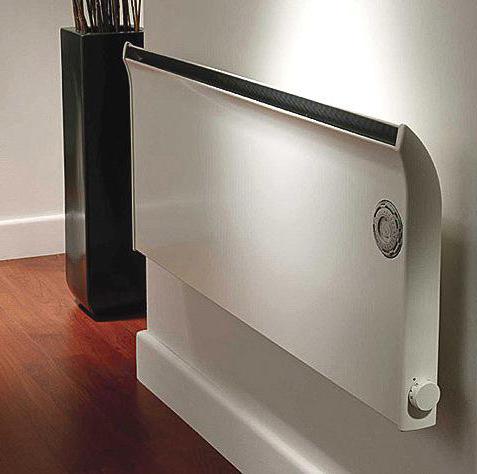

The design and features of the oil heater
When an oil heater is in operation, heat is supplied to the manned room both by convection and radiation. Radiation is a method of heat transfer in which a hot body emits infrared waves that heat nearby objects. Depending on the model, radiation accounts for up to 30% of the heat transfer balance of this heater.There are devices in which some of the convection heat transfer is increased. To do this, they use a protective casing in which holes are arranged to increase the flow of rising air.
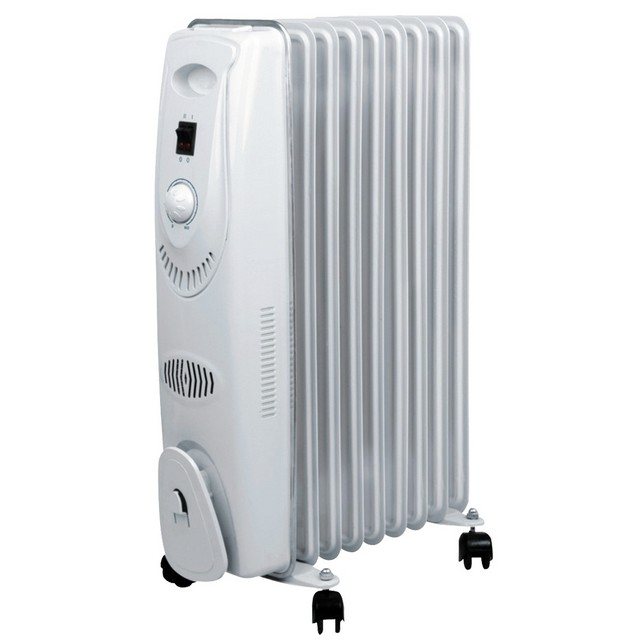

Oil heater.
The heating element in such a device does not interact directly with air. It is housed in a sealed housing filled with mineral oil. The high heat capacity of the oil makes it possible to make the device inert with its use: the heated liquid cools down for a long time, transferring heat to the environment at this time, even when it is already disconnected from the network. Structurally, the oil heater consists of a heating element, a body, protective and regulating automatics. Since heated oil is flammable, all instruments must be checked for the integrity of the case. Some models are equipped with a rollover protection sensor.
Convector type heaters
There are two types of convectors - water and electric. The first is connected to the water heating system of the house and works, in fact, like a regular radiator. The second is the electrical system. Such a device, like an oil heater, is connected to an outlet. We are interested in the second option, because our task is to find the difference between a convector and an oil cooler. And since the second device is electrical, it must be compared with the same product.
Electric convectors are available in two types - floor and wall. They are made from metal sheets, but their main type of energy is convection. Moreover, the radiation is small due to the small area of the metal case. The design of the convector is simpler.
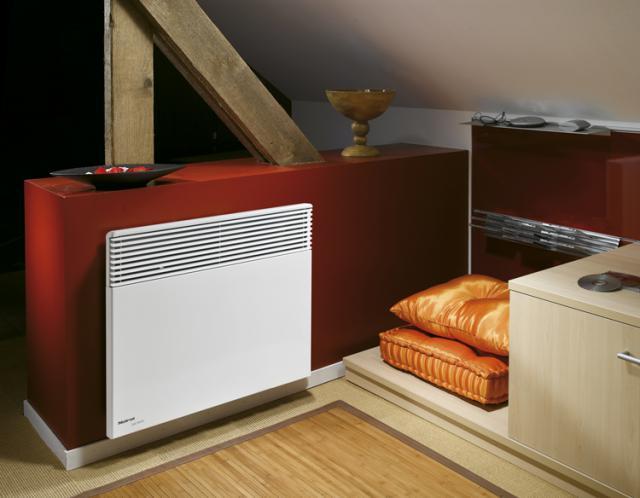

Convector in the attic
It includes:
- Metal body.
- Heating element built into the body.
That is, there are no intermediary materials, hence the efficiency of the device, equal to 100%. How does the room heat up? There are two rows of gaps in the convector body - lower and upper. Cold air enters in through the lower slots, heats up inside and exits through the upper openings directly into the room. Only physical laws work. At the same time, there are no injection elements in the device, and everything happens in a natural way.
Like an oil heater, the electric convector is equipped with a thermostat that monitors the operation of the unit and the ambient temperature. Many manufacturers do not make the upper slots horizontal, but with a slight downward slope. It turns out that hot air does not immediately come out, accumulates in the upper part of the case, and then, under slight pressure, leaves it with a direction towards the floor. This ensures uniform distribution of hot air masses throughout the entire volume of the heated space.
To determine which is better - a convector or a radiator, it is necessary to consider the advantages of the first:
- These devices fully meet fire safety requirements.
- Several convectors installed in different rooms can be combined into one heating network.
- The installed rheostat will help to save electric current.
How does a convector differ from an oil heater?
In order to answer the question of what is better to choose a convector or an oil heater for heating a room, it is necessary to determine the differences between devices and the difference in their operation. The main difference is the percentage of convection and radiation through which heat is transferred into the room. In the convector, the radiation is small, since it depends on the surface temperature.
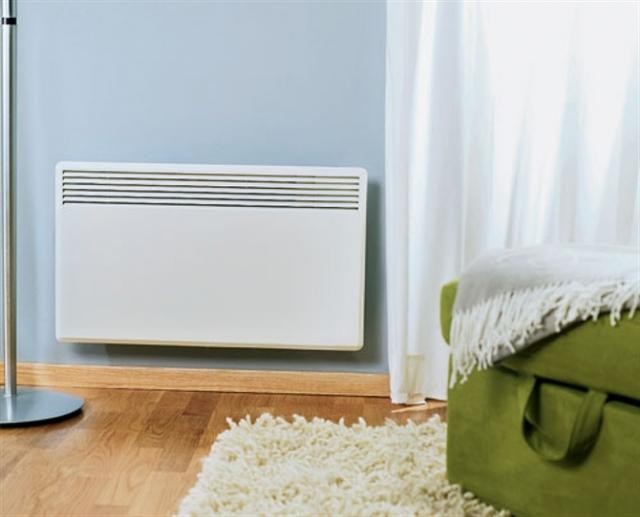

Convector on the wall.
The oil cooler heats up more and the radiation from it is greater. This is used for the possibility of local heating. A person near the oil cooler feels the heat emanating from it. There is much less such heat from the convector, most of it rises with convective air currents to the ceiling.All oil heaters are manufactured for floor standing installation. They are equipped with legs or wheels, which allows them to be quickly moved between rooms. Convectors are often hung on the wall, but there are also floor models. Installation under the window allows, due to the rising warm air, to reduce the leakage of cold air through the cracks and fogging during the cold season.
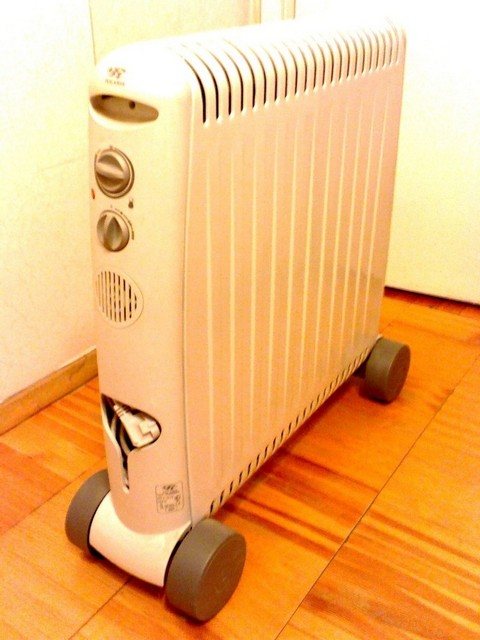

Oil heater in the casing.
Rating of the best oil heaters
If even after carrying out a comparative work, a detailed examination of all the advantages and disadvantages of modern radiators, you decide that an oil radiator is the best for you, then check out the most popular models of this type.
Important! If you visit a store that sells heating equipment, it becomes clear that even well-known brands are produced in China. European goods are rarely seen on display windows, but they are also more expensive. Experts recommend evaluating oil radiators not by where they are made, but by the reliability and functionality of the device. The most important indicators are the number of sections, power.
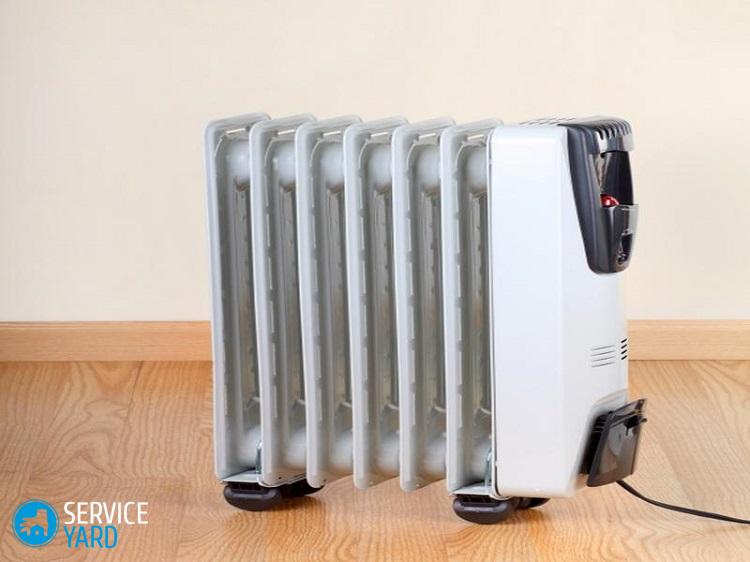

Rating of oil heaters that are most often sold:
- DeLongHI GS 770715 is a seven-section device designed for a small room, no more than 15 square meters. It is equipped with a fan and built-in thermostat, and has an anti-freeze and overheating function. A favorite among buyers.
- Mystery MH-7001 - the radiator has seven sections, has a three-stage power regulator, thermostat, overheating protection.
- Electrolux EOH / M-1157 - the device is designed to heat one room with an area of no more than 15 square meters. This device also consists of seven sections and has a maximum power of 1500 watts. There is a possibility of power adjustment.
Which is more economical, a convector or an oil heater?
Which is better for saving, a convector or an oil heater? The efficiency of both devices is almost the same and approaches 100% (like other direct heating electric heaters). Almost all of the electrical energy consumed is converted into heat and remains in the room. But due to the difference in function, when the oil heater is operating, a little more energy is consumed to maintain the same temperature.
When the convector is switched on to maintain a certain temperature, it quickly reaches the required value and turns off. For example, it is required to ensure that the room is constantly 20 degrees. The switched on convector almost immediately goes into operation and starts warming up.
Having reached the set temperature, it turns off and cools down. The air is cooled and the thermostat is triggered, turning the device into operation again. The temperature difference when the device is turned on and off will whistle on the accuracy of the thermostat - more precisely electronic. During the operation of the oil cooler, a large inertness is observed. When you turn on and set the same temperature, heating starts with a significant delay. In some models, the exit to the specified mode occurs after 20 minutes. At this time, the oil warms up.
When the radiator has reached operating temperature, it transfers heat completely to the room. As in the convector, when it reaches 20 degrees (for example), the thermostat cuts off the power from the heating element. But the heater still remains hot and then transfers heat to the room. It cools down as slowly as heating. The room temperature becomes higher than the set one, heat loss through the enclosing structures increases. Due to this, energy consumption increases.
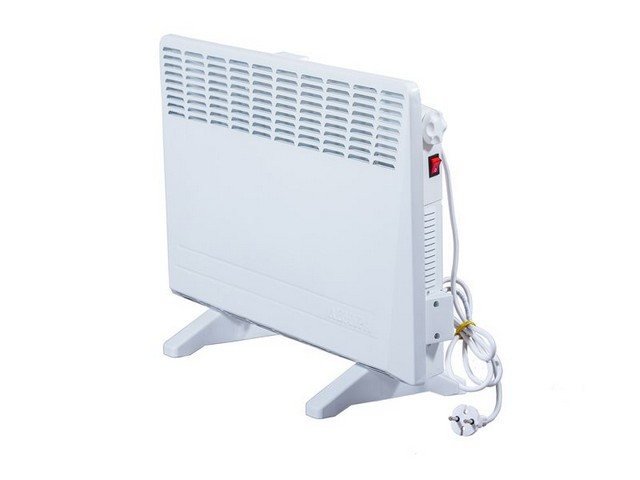

Convector on legs.
When, after a certain period of time, the room temperature drops to the thermostat setpoint, the power is turned on, but since the oil also heats up slowly, the room temperature does not rise or falls further during the warm-up period. The cycle is repeated - the radiator goes into operation.
The principle of operation, pros and cons of an oil heater
When choosing an oil heater for your home, you should understand how it works. Outwardly, it is a metal case, inside of which there is a container with mineral oil.After turning on the device, the heating element starts working, which increases the oil temperature. The oil, in turn, heats up the metal body, and it gives off its heat to the environment. This takes quite a long amount of time, but the heat spreads evenly throughout the room.
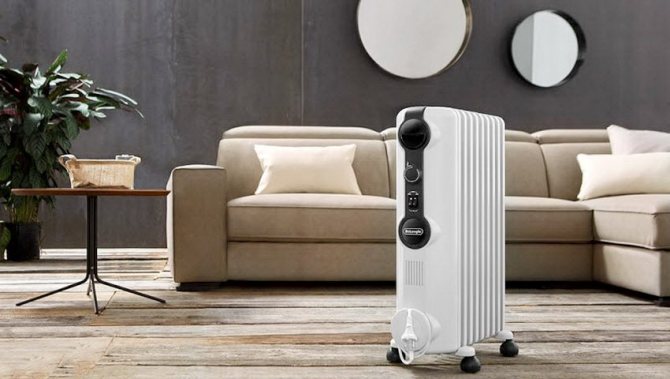

Oil heater heats the room slowly but evenly
The intensity of air heating in such radiators, as a rule, is regulated, and the design is equipped with wheels for greater mobility. There are floor and wall oil heaters. It is advisable to buy the latter if there is a small child or pets in the house. This heater works for periods. When the room temperature rises to the desired level, the built-in sensor turns off the heating element. When the temperature drops, the opposite process takes place. Thus, the use of an electric oil heating radiator saves energy.
Of the advantages of an oil cooler, the following can be distinguished:
- High level of safety - all heating elements are hidden inside the case, so you can not be afraid of getting burned on the oil heater. In addition, most models are equipped with a special sensor that turns off the device in the event of a rollover.
- No noise during operation - you can safely install a household electric oil heater in your bedroom or office. Also, the device takes up little space, and it can be placed not only on the floor, but also on the wall.
- Long service life - the heating element of the oil cooler is reliable and durable, and the device itself can work for several days without interruption. Most modern models are equipped with built-in overheating protection.
- No unpleasant odor is emitted during operation. In addition, modern oil heaters (Delongy and other firms) do not dry out the air in the room, so you do not have to buy an air humidifier complete with the device.
- The price of the heater is quite low, so everyone can afford it.
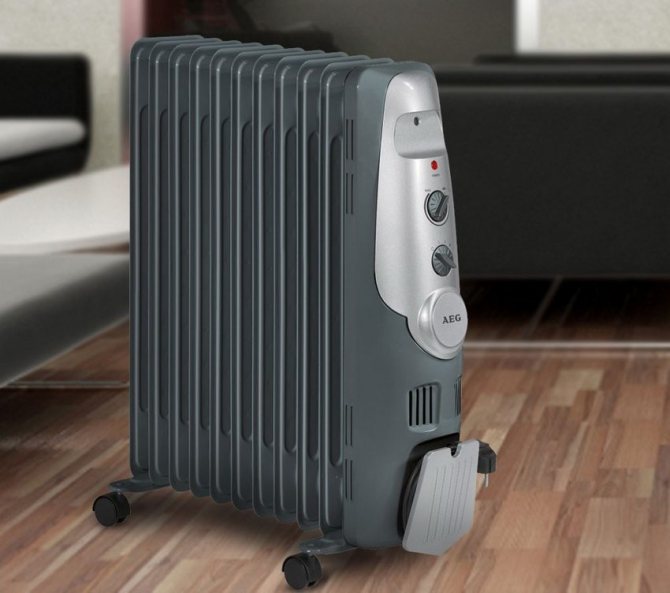

Oil radiators have many advantages, such as quietness, economy and safety.
As with any household appliance, the oil heater has its drawbacks. Among them are:
- The air in the room takes a long time to warm up, especially when it comes to a large room. This problem can be corrected by buying an oil heater with a fan: the heated air will spread faster.
- The structure itself weighs a lot, so it is better if the device is equipped with wheels. It is worth hanging an oil heater on the wall only if there are reliable fasteners.
Helpful advice! When choosing an oil heater, pay attention to the manufacturer. As a rule, brand awareness guarantees the high quality of the heating device.
What to choose an oil heater or convector
So which is better, an oil heater or a convector? If a device is chosen for the main heating system of a room, then it is more expedient to use convectors. They heat up rooms faster and allow more precise temperature control. When using electronic thermostats, the control accuracy reaches tenths of a degree. Although the energy consumption of these devices is approximately the same, the oil heater loses in energy efficiency to the convector. This is due to the inertness of the device, which does not allow maintaining the temperature with high accuracy. Temperature drops occur, which increase heat loss through the building envelope. Although, this difference is small.
When is it more convenient to use oil heaters? It is advisable to use them for reheating a room or part of it. Since most of the heat is transmitted by radiation, a person feels it near such a heater.Because of these properties, oil heaters are installed directly near places where people stay for a long time, even if there is another heating system in the building.
Convector reviews
Convectors are in great demand due to their compactness, lightness and ease of operation. Added to this is the stylistic merit. The owners note that the possibility of purchasing a heater with an original design even allows you to decorate the interior with the appearance of the body, while the previous generations of heating units had to be hidden from view. On the other hand, low performance is a common weak point that characterizes any convector. Reviews indicate the inability of most models of this type to effectively cope with the rapid heating of large rooms. But it is important to keep in mind that this drawback manifests itself precisely in comparison with oil heaters of a similar class.
Benefits
Convector:
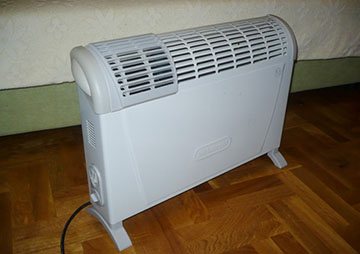

- Rapid heating of rooms.
- Fireproof.
- The cabinet does not get hot enough to be dangerous.
- Tipping is not scary.
- Most appliances can be wall or floor mounted.
- Quiet in operation.
- Do not require constant supervision.
- Devices with protection class IP24 can be used in humid rooms.
Oil heater:
- Does not cool down immediately, radiates heat after shutdown.
- Relatively inexpensive.
- Models equipped with all protective functions have a high level of safety.
The managers' favorite phrase about oxygen burning is just a publicity stunt. Only open flame burns oxygen, which neither the convector nor the oil heater has. There may be a feeling of "dryness", or that the room is "It's harder to breathe", due to the natural property of the air (as its temperature rises, the relative humidity decreases).
Don't pay attention to the dust reports either. Dust is always and everywhere. Its amount is determined by the frequency of wet cleaning in the apartment, and not by the method of heating the air.
Don't want to take your unrepaired oil cooler to the workshop? Self-repair of oil heaters is not an easy task, but a beginner can also handle simple breakdowns.
Read more about the pros and cons of convector heaters here.
Do you want to create warmth and comfort in your home without using bulky radiators? Then the following topic will be relevant to you: https://microklimat.pro/otopitelnoe-oborudovanie/otopitelnye-pribory/konvektory-otopleniya-vodyanye-vstraivaemye-v-pol.html. Water convectors built into the floor: device and application.
Oil and Convector Heater: Comparison
To find out which of the two types of electric heaters is the best, let's compare their main characteristics.
- The efficiency of the device in terms of power consumption... The convector heater clearly outperforms its oil competitor due to the fact that under the same conditions it consumes 25% less electrical energy. Taking into account the constant growth of prices for electricity, this circumstance may be decisive when choosing a heater.
- Duration of room air heating... In an oil heater, when it is switched on, the heating element is first heated, from which the mineral oil surrounding the heating element is heated. Further, the oil heats up the fins of the metal case, and only from it is heat transferred to the room air. All this takes quite a lot of time (and electricity). As a result, it turns out that the device has been on for a long time, but the room is still too cool. A fan built into some models can speed up all these processes somewhat. A convector heater looks a little more advantageous against this background, since the heating element in it heats the body directly.But the speed of heating a room with their help is almost comparable to oil radiators, which are equipped with fans.
- Comfort of usethat also includes ease of installation and easy portability. According to this parameter, convector heaters outperform oil appliances, since their weight does not exceed 10 kg. At the same time, oil radiators usually weigh from 18 to 25 kg, which greatly affects the convenience of their movement around the room. Even a child can easily move a convector heater on wheels to another part of the room. When attaching it to the wall, the area of the room is significantly saved, and the cleaning process is also simplified. When using a convector, the room temperature will be more evenly comfortable. In the case of oil radiators, the temperature difference is noticeably felt near it and in the far corner of the room.

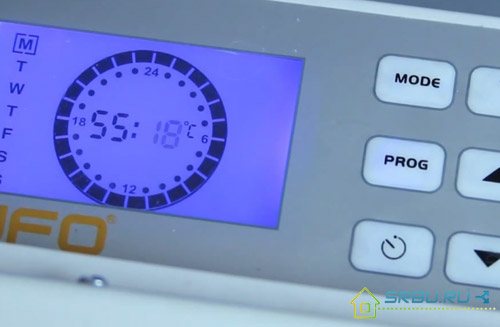
- Safety. The oil heater is again inferior to its competitor, since its body heats up quite strongly. It is easy to get severe burns if accidentally touched. This disadvantage of oil coolers is partially eliminated with a special protective casing. Convector devices for warming rooms can be safely considered completely safe in operation. Their housings only heat up to 60 degrees Celsius, at which a burn is impossible. Even a convector operating without the control of the owners will not become a source of serious trouble. But oil heaters under no circumstances should be left unattended by people, since some of them are not equipped with much-needed overheating sensors, which, in an unfavorable development of events, could disconnect the device from the network.

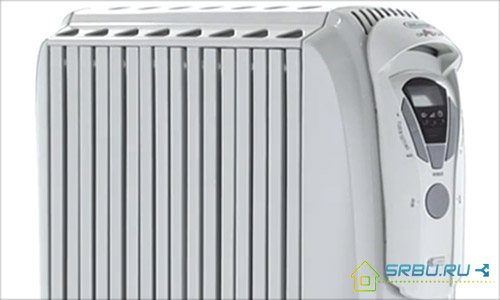
- Service life of heating appliances. Convectors are again the leaders in this indicator. They can easily last 10 or even 15 years, warming households in cold weather. And this is despite the fact that the manufacturers themselves usually indicate the warranty period for their work only 5 years. In the case of oil coolers, it is difficult to expect the same impressive service life. The fact is that over time, microcracks may appear on their case, through which the mineral oil, which transfers heat from the heating elements to the metal case, will begin to evaporate little by little. As a result, the heating elements burn out and the device fails. In this case, the repair of oil coolers will not be possible, since it is unlikely that it will be possible to find a small defect in the case.
- Environmental friendliness of heaters. When warm and cold air currents move, the smallest dust comes into motion along with them. If a salesperson in a store begins to assure you that which particular model of oil or convection heater does not raise dust, he is lying. With regard to the problem of oxygen burnout, then, due to the design features and the principle of operation of both types of electric heaters, this is impossible. There is no open combustion, which means that oxygen does not burn.
- Heater cost. According to this parameter, oil radiators look more advantageous, since the prices for these devices are noticeably lower than for convector devices. But it is worth remembering that low price is not always the main parameter.
Based on the data that were found out in the course of comparing two types of electric heaters, it can be concluded that the convector is significantly superior over the oil cooler. Due to their small size, lightness, quietness and safety, convector heaters are gradually taking the place of oil radiators in residential and office premises. Of course, oil heaters will not be completely out of the market anytime soon, as the more affordable price attracts many buyers.In addition, models with fans are able to heat the room in a shorter time than the convector can do. This will be especially noticeable if the device heats a small room.
The continuing popularity of oil radiators to this day can be explained by the fact that they appeared in our homes much earlier than convectors, therefore, by habit, they are in great demand and trust. And far from many ordinary people want to experiment with technical innovations.
But nevertheless, it is worth listening to the advice of experts, as well as to the reviews of the buyers of convectors, who have already managed to fully assess their strengths and weaknesses. Moreover, in many respects these devices are significantly superior to oil counterparts.
As a result, everyone has the right to make a choice of which particular heating device best suits his needs and the contents of his wallet. the main thing is that he himself is satisfied with the choice he has made.

